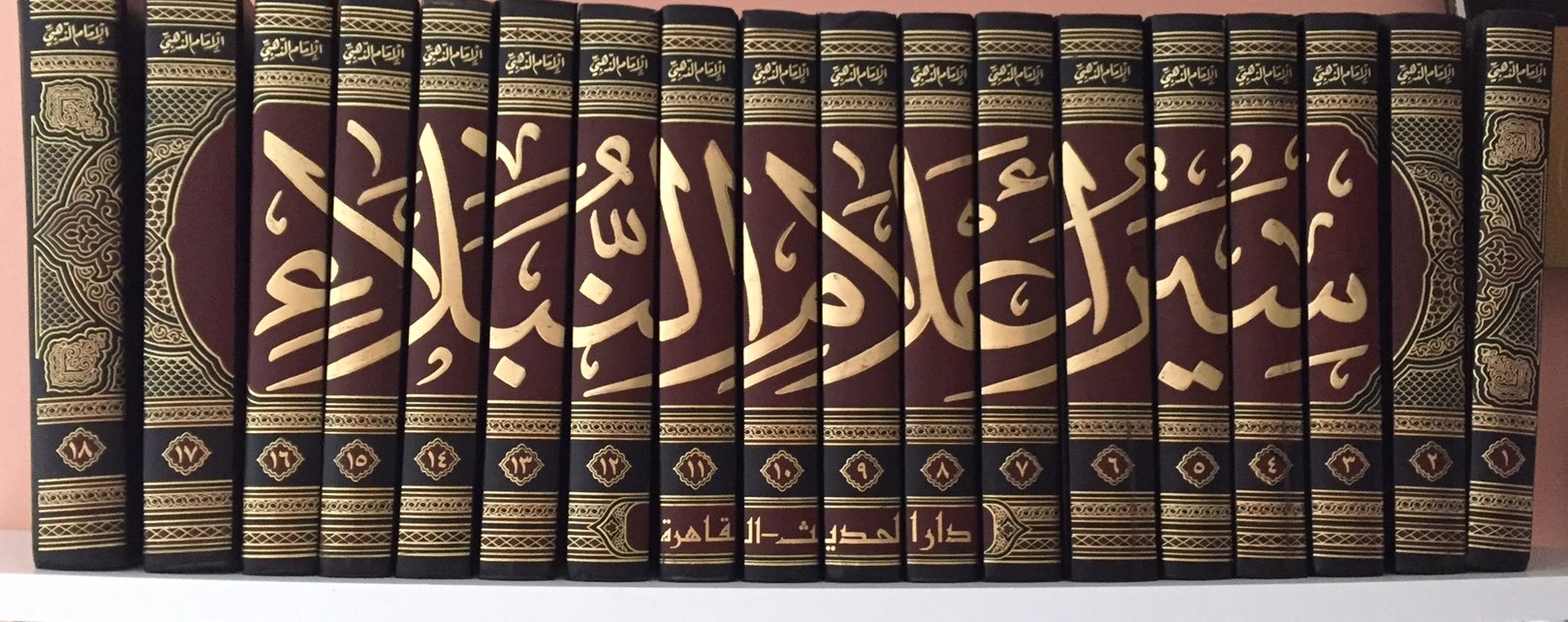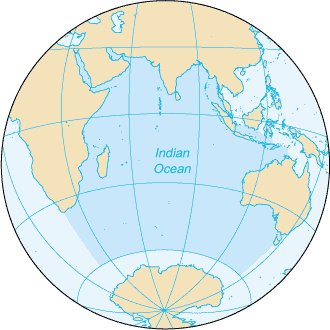|
Al-Dhahabi
Shams ad-Dīn adh-Dhahabī (), also known as Shams ad-Dīn Abū ʿAbdillāh Muḥammad ibn Aḥmad ibn ʿUthmān ibn Qāymāẓ ibn ʿAbdillāh at-Turkumānī al-Fāriqī ad-Dimashqī (5 October 1274 – 3 February 1348) was an Islamic historian and Hadith expert. Life Of Arab descent, Adh-Dhahabi was born in Damascus. His name, ibn adh-Dhahabi (son of the goldsmith), reveals his father's profession. He began his study of hadith at age eighteen, travelling from Damascus to Baalbek, Homs, Hama, Aleppo, Nabulus, Cairo, Alexandria, Jerusalem, Hijaz, and elsewhere, before returning to Damascus to teach and write. He authored many works and was widely renown as a perspicuous critic and expert examiner of the hadith. He wrote an encyclopaedic biographical history and was the foremost authority on the canonical readings of the Qur'an. Some of his teachers were women. At Baalbek, Zaynab bint ʿUmar b. al-Kindī was among his most influential teachers. Adh-Dhahabi lost his sight t ... [...More Info...] [...Related Items...] OR: [Wikipedia] [Google] [Baidu] |
Ibn Taymiyyah
Ibn Taymiyyah (January 22, 1263 – September 26, 1328; ar, ابن تيمية), birth name Taqī ad-Dīn ʾAḥmad ibn ʿAbd al-Ḥalīm ibn ʿAbd al-Salām al-Numayrī al-Ḥarrānī ( ar, تقي الدين أحمد بن عبد الحليم بن عبد السلام النميري الحراني ),Ibn Taymiyyah, Taqi al-Din Ahmad, The Oxford Dictionary of Islam. http://www.oxfordreference.com/view/10.1093/acref/9780195125580.001.0001/acref-9780195125580-e-959 was a Sunni Muslim ʿĀlim, muhaddith, judge, proto-Salafist theologian, and sometimes controversial thinker and political figure. He is known for his diplomatic involvement with the Ilkhanid ruler Ghazan Khan and for his involvement at the Battle of Marj al-Saffar which ended the Mongol invasions of the Levant. A member of the Hanbali school, Ibn Taymiyyah's iconoclastic views that condemned numerous folk practices associated with saint veneration and the visitation of tomb-shrines made him unpopular with many ... [...More Info...] [...Related Items...] OR: [Wikipedia] [Google] [Baidu] |
Ibn Kathir
Abū al-Fiḍā’ ‘Imād ad-Dīn Ismā‘īl ibn ‘Umar ibn Kathīr al-Qurashī al-Damishqī (Arabic: إسماعيل بن عمر بن كثير القرشي الدمشقي أبو الفداء عماد; – 1373), known as Ibn Kathīr (, was a highly influential Arab historian, exegete and scholar during the Mamluk era in Syria. An expert on '' tafsir'' (Quranic exegesis) and ''fiqh'' (jurisprudence), he wrote several books, including a fourteen-volume universal history titled Al-Bidaya wa'l-Nihaya. Ludwig W. Adamec (2009), ''Historical Dictionary of Islam'', p.138. Scarecrow Press. . His ''tafsir'' is recognized for its critical approach to '' Israʼiliyyat'', especially among Western Muslims and Wahhabi scholars. His methodology largely derives from his teacher Ibn Taymiyyah, and differs from that of other earlier renowned exegetes such as Tabari. For that reason, he is mostly considered an Athari, despite being a Shafi'i jurist. Biography His full name was () and had ... [...More Info...] [...Related Items...] OR: [Wikipedia] [Google] [Baidu] |
Shafi'i
The Shafii ( ar, شَافِعِي, translit=Shāfiʿī, also spelled Shafei) school, also known as Madhhab al-Shāfiʿī, is one of the four major traditional schools of religious law (madhhab) in the Sunnī branch of Islam. It was founded by Arab theologian Muḥammad ibn Idrīs al-Shāfiʿī, "the father of Muslim jurisprudence", in the early 9th century. The other three schools of Sunnī jurisprudence are Ḥanafī, Mālikī and Ḥanbalī. Like the other schools of fiqh, Shafii recognize the First Four Caliphs as the Islamic prophet Muhammad’s rightful successors and relies on the Qurʾān and the "sound" books of Ḥadīths as primary sources of law. The Shafi'i school affirms the authority of both divine law-giving ( the Qurʾān and the Sunnah) and human speculation regarding the Law. Where passages of Qurʾān and/or the Ḥadīths are ambiguous, the school seeks guidance of Qiyās (analogical reasoning). The Ijmā' (consensus of scholars or of the community) ... [...More Info...] [...Related Items...] OR: [Wikipedia] [Google] [Baidu] |
Ibn Asakir
Ibn Asakir ( ar-at, ابن عساكر, Ibn ‘Asākir; 1105–c. 1176) was a Syrian Sunni Islamic scholar, who was one of the most renowned experts on Hadith and Islamic history in the medieval era. and a disciple of the Sufi mystic Abu al-Najib Suhrawardi. Ibn Asakir is the pre-eminent figure of the Asakir dynasty, whose family members occupied the most prominent positions as judges and scholars of the Shafi'i school of the Sunni law in Damascus for almost two centuries. Name and Titles His full name was ‘Alī ibn al-Ḥasan ibn Hibat Allāh ibn `Abd Allāh, Thiqat al-Dīn, Abū al-Qasim, known as Ibn `Asakir al-Dimashqi al-Shafi`i al-Ash`ari (الحافظ المورخ علی بن الحسن بن ھبۃ اللہ بن عبداللہ بن الحسین الدمشقی الشافعی). Ibn Asakir is often given the honorary epithets such as Al-Imam, al-'Allamah, al-Hafidh al-Kabeer, Fakhruddin, al-Mujawwid, Muhaddith ash-Sham. Life Born in Damascus, during the reign of ''atabeg ... [...More Info...] [...Related Items...] OR: [Wikipedia] [Google] [Baidu] |
Historiography Of Early Islam
The historiography of early Islam is the scholarly literature on the early history of Islam during the 7th century, from Muhammad's first revelations in 610 until the disintegration of the Rashidun Caliphate in 661, and arguably throughout the 8th century and the duration of the Umayyad Caliphate, terminating in the incipient Islamic Golden Age around the beginning of the 9th century. Primary sources 7th-century Islamic sources * Between c. 568 and 645 Birmingham Quran manuscript * Radiocarbon dated between c. 649 and 675 (though written in the post-8th century Kufic scriptTübingen fragment* Between c. 578 and 669 Sanaa manuscript * 692 – Qur'anic Mosaic on the Dome of the Rock. * The Book of Sulaym ibn Qays, attributed to Sulaym ibn Qays (death 694–714). The work is an early Shia hadith collection, and it is often recognised as the earliest such collection. There is a manuscript of the work dating to the 10th century. Some Shia scholars are dubious about the ... [...More Info...] [...Related Items...] OR: [Wikipedia] [Google] [Baidu] |
Islam
Islam (; ar, ۘالِإسلَام, , ) is an Abrahamic monotheistic religion centred primarily around the Quran, a religious text considered by Muslims to be the direct word of God (or ''Allah'') as it was revealed to Muhammad, the main and final Islamic prophet.Peters, F. E. 2009. "Allāh." In , edited by J. L. Esposito. Oxford: Oxford University Press. . (See alsoquick reference) " e Muslims' understanding of Allāh is based...on the Qurʿān's public witness. Allāh is Unique, the Creator, Sovereign, and Judge of mankind. It is Allāh who directs the universe through his direct action on nature and who has guided human history through his prophets, Abraham, with whom he made his covenant, Moses/Moosa, Jesus/Eesa, and Muḥammad, through all of whom he founded his chosen communities, the 'Peoples of the Book.'" It is the world's second-largest religion behind Christianity, with its followers ranging between 1-1.8 billion globally, or around a quarter of the world' ... [...More Info...] [...Related Items...] OR: [Wikipedia] [Google] [Baidu] |
Baalbek
Baalbek (; ar, بَعْلَبَكّ, Baʿlabakk, Syriac-Aramaic: ܒܥܠܒܟ) is a city located east of the Litani River in Lebanon's Beqaa Valley, about northeast of Beirut. It is the capital of Baalbek-Hermel Governorate. In Greek and Roman times Baalbek was also known as Heliopolis (, Greek for "Sun City"). In 1998 Baalbek had a population of 82,608, mostly Shia Muslims, followed by Sunni Muslims and Christians. It is home to the Baalbek temple complex which includes two of the largest and grandest Roman temple ruins: the Temple of Bacchus and the Temple of Jupiter. It was inscribed in 1984 as an UNESCO World Heritage site. Name A few miles from the swamp from which the Litani (the classical Leontes) and the Asi (the upper Orontes) flow, Baalbek may be the same as the ''manbaa al-nahrayn'' ("Source of the Two Rivers"), the abode of El in the Ugaritic Baal Cycle discovered in the 1920s and a separate serpent incantation. Baalbek was called Heliopolis during the Rom ... [...More Info...] [...Related Items...] OR: [Wikipedia] [Google] [Baidu] |
Homs
ar, حمصي, Himsi , population_urban = , population_density_urban_km2 = , population_density_urban_sq_mi = , population_blank1_title = Ethnicities , population_blank1 = , population_blank2_title = Religions , population_blank2 = , population_density_blank1_km2 = , population_density_blank1_sq_mi = , timezone = EET , utc_offset = +2 , timezone_DST = EEST , utc_offset_DST = +3 , coordinates = , elevation_footnotes = , elevation_m = 501 , elevation_ft = , postal_code_type = , postal_code = , area_code = Country code: 963 City code: 31 , geocode = C2528 , blank_name = Climate , blank_info = Csa , blank1_name ... [...More Info...] [...Related Items...] OR: [Wikipedia] [Google] [Baidu] |
Hama
Hama ( ar, حَمَاة ', ; syr, ܚܡܬ, ħ(ə)mɑθ, lit=fortress; Biblical Hebrew: ''Ḥamāṯ'') is a city on the banks of the Orontes River in west-central Syria. It is located north of Damascus and north of Homs. It is the provincial capital of the Hama Governorate. With a population of 854,000 (2009 census), Hama is the fourth-largest city in Syria after Damascus, Aleppo and Homs. The city is renowned for its seventeen norias used for watering the gardens, which are locally claimed to date back to 1100 BC. Though historically used for purpose of irrigation, the norias exist today as an almost entirely aesthetic traditional show. Etymology The name "Hama" appears to stem from Phoenician ''khamat'', "fort." History The ancient settlement of Hamath was occupied from the early Neolithic to the Iron Age. Neolithic The stratigraphy is very generalized, which makes detailed comparison to other sites difficult. Level M ( thick) contained both white ware (lime-p ... [...More Info...] [...Related Items...] OR: [Wikipedia] [Google] [Baidu] |
Nabulus
Nablus ( ; ar, نابلس, Nābulus ; he, שכם, Šəḵem, ISO 259-3: ; Samaritan Hebrew: , romanized: ; el, Νεάπολις, Νeápolis) is a Palestinian city in the West Bank, located approximately north of Jerusalem, with a population of 126,132.PCBS02007 Locality Population Statistics. Palestinian Central Bureau of Statistics (PCBS). Located between Mount Ebal and Mount Gerizim, it is the capital of the Nablus Governorate and a commercial and cultural centre of the State of Palestine, home to An-Najah National University, one of the largest Palestinian institutions of higher learning, and the Palestine Stock Exchange.Amahl Bishara, ‘Weapons, Passports and News: Palestinian Perceptions of U.S. Power as a Mediator of War,’ in John D. Kelly, Beatrice Jauregui, Sean T. Mitchell, Jeremy Walton (eds.''Anthropology and Global Counterinsurgency,''pp.125-136 p.126. Nablus is under the administration of the Palestinian National Authority as part of Area A of the West Ban ... [...More Info...] [...Related Items...] OR: [Wikipedia] [Google] [Baidu] |
Aleppo
)), is an adjective which means "white-colored mixed with black". , motto = , image_map = , mapsize = , map_caption = , image_map1 = , mapsize1 = , map_caption1 = , pushpin_map = Syria#Mediterranean east#Asia#Syria Aleppo , pushpin_label_position = left , pushpin_relief = yes , pushpin_mapsize = , pushpin_map_caption = Location of Aleppo in Syria , coordinates = , subdivision_type = Country , subdivision_name = , subdivision_type1 = Governorate , subdivision_type2 = District , subdivision_type3 = Subdistrict , subdivision_name1 = Aleppo Governorate , subdivision_name2 = Mount Simeon (Jabal Semaan) , subdivision_name3 = Mount Simeon ... [...More Info...] [...Related Items...] OR: [Wikipedia] [Google] [Baidu] |
Cairo
Cairo ( ; ar, القاهرة, al-Qāhirah, ) is the capital of Egypt and its largest city, home to 10 million people. It is also part of the largest urban agglomeration in Africa, the Arab world and the Middle East: The Greater Cairo metropolitan area, with a population of 21.9 million, is the 12th-largest in the world by population. Cairo is associated with ancient Egypt, as the Giza pyramid complex and the ancient cities of Memphis and Heliopolis are located in its geographical area. Located near the Nile Delta, the city first developed as Fustat, a settlement founded after the Muslim conquest of Egypt in 640 next to an existing ancient Roman fortress, Babylon. Under the Fatimid dynasty a new city, ''al-Qāhirah'', was founded nearby in 969. It later superseded Fustat as the main urban centre during the Ayyubid and Mamluk periods (12th–16th centuries). Cairo has long been a centre of the region's political and cultural life, and is titled "the city of a thousa ... [...More Info...] [...Related Items...] OR: [Wikipedia] [Google] [Baidu] |




.jpg)

.jpg)


